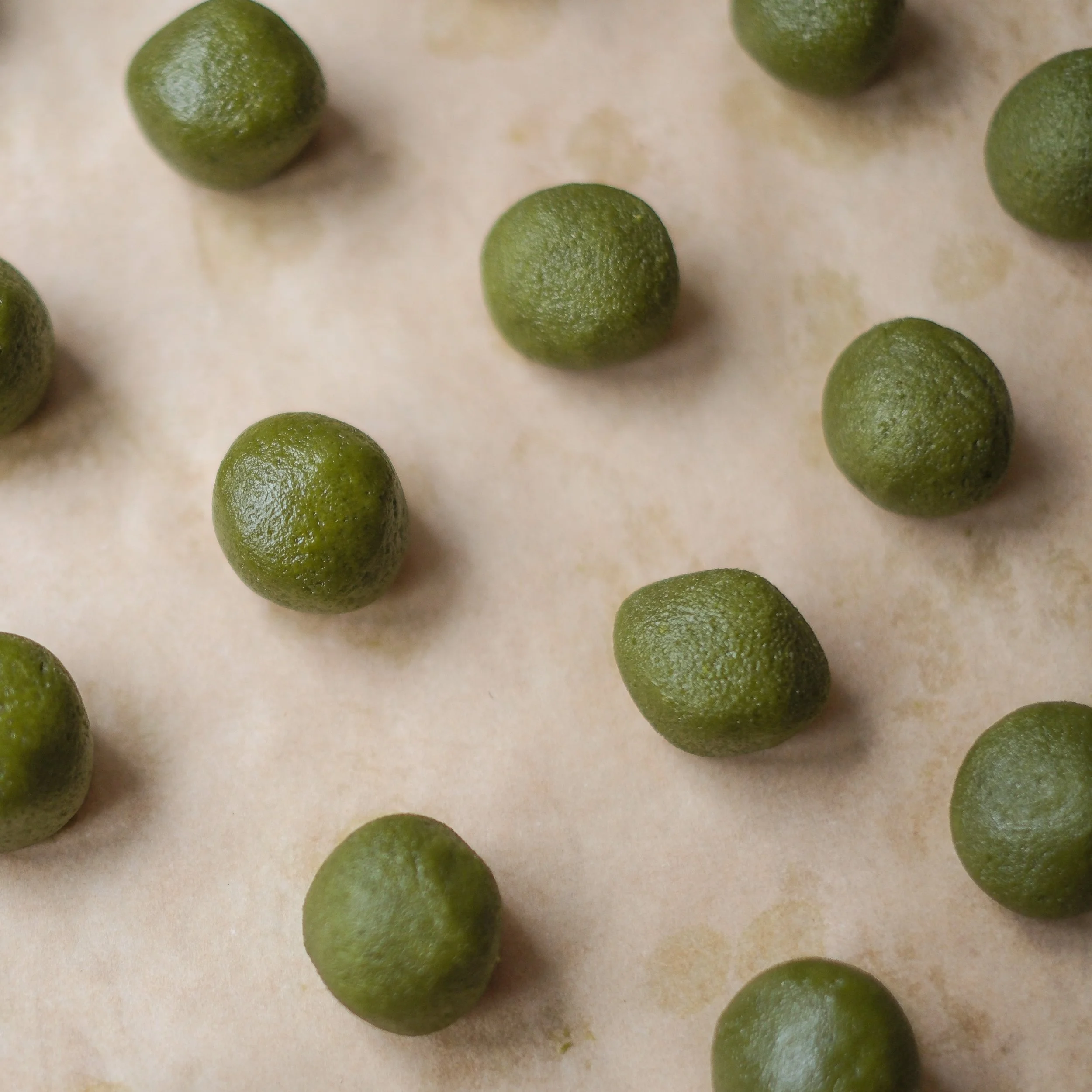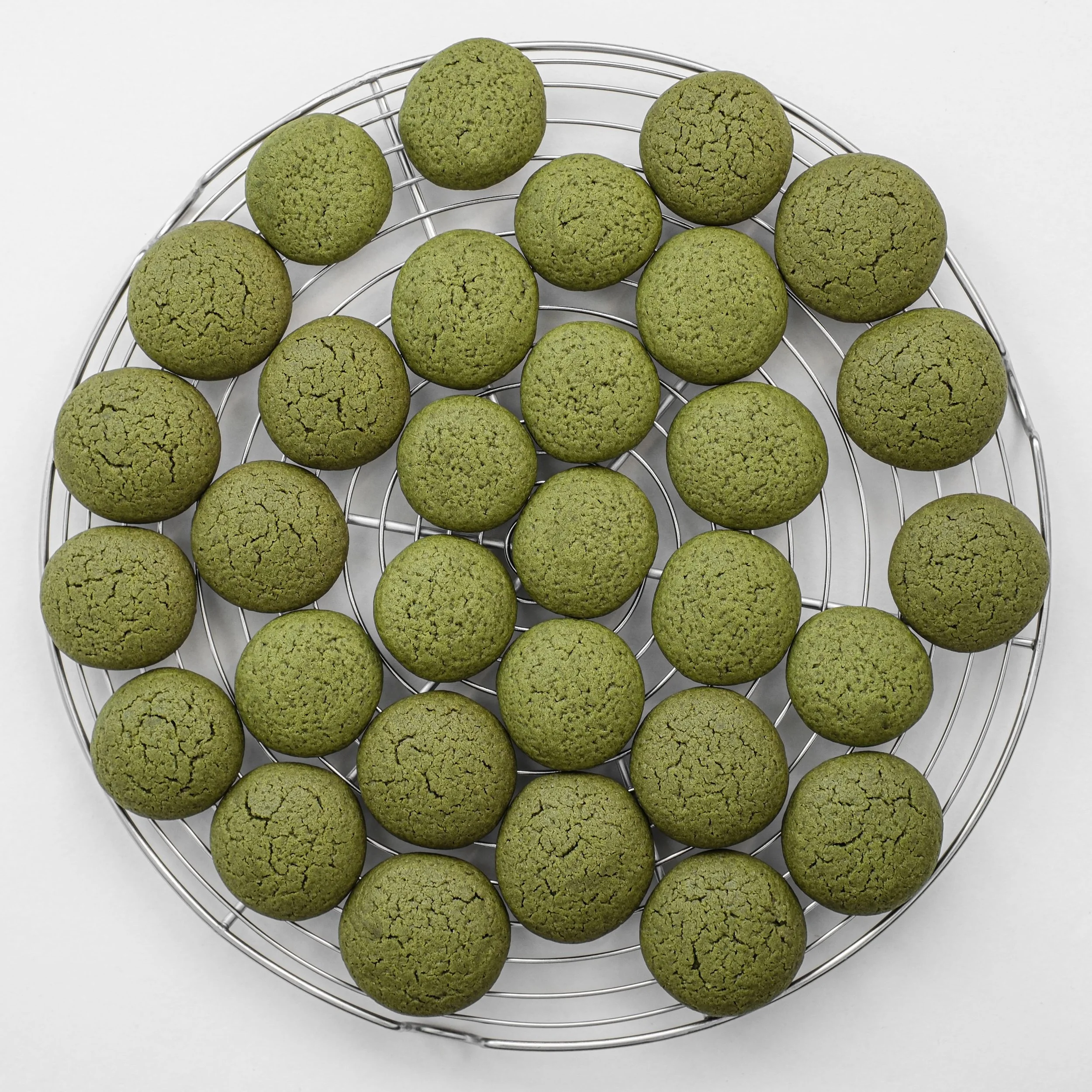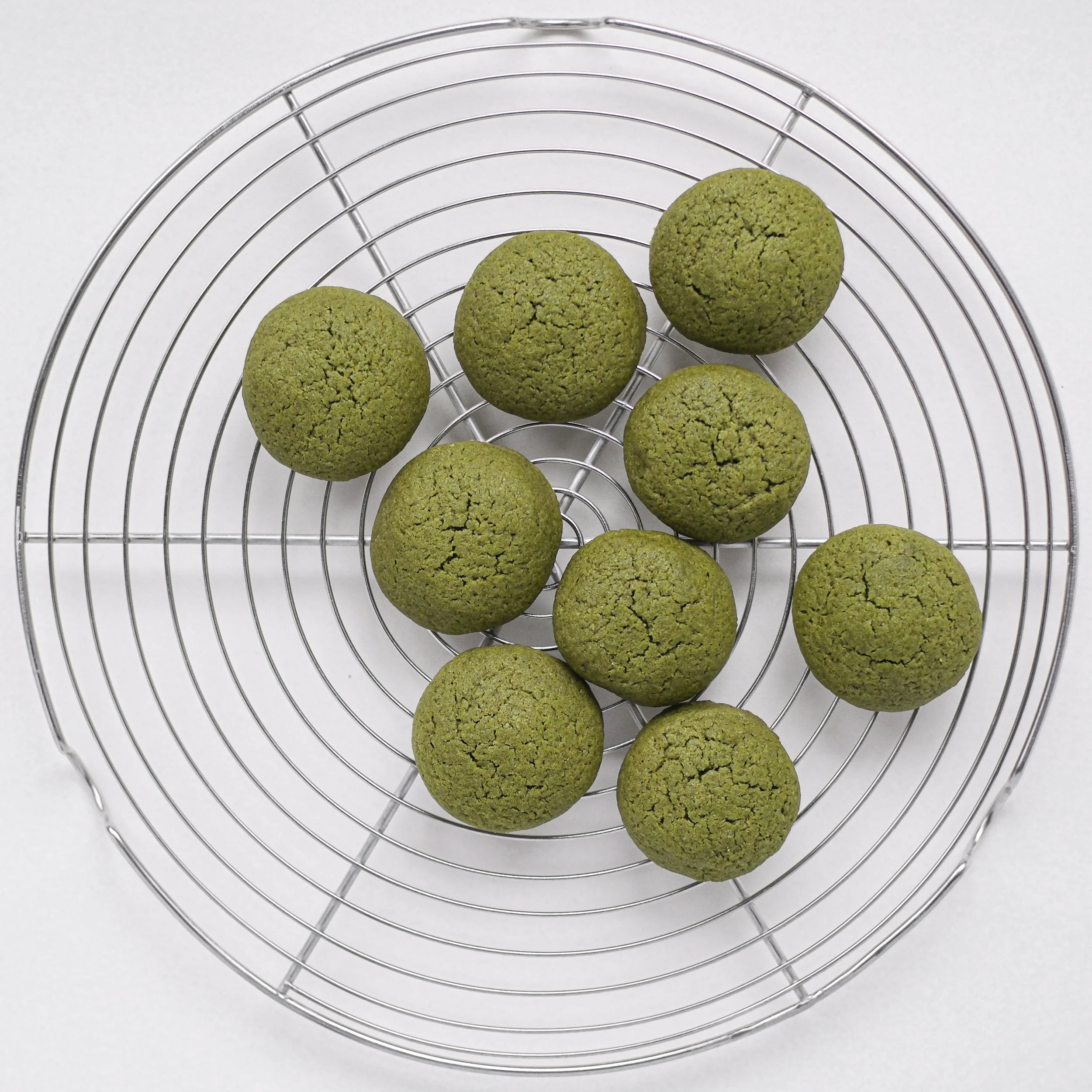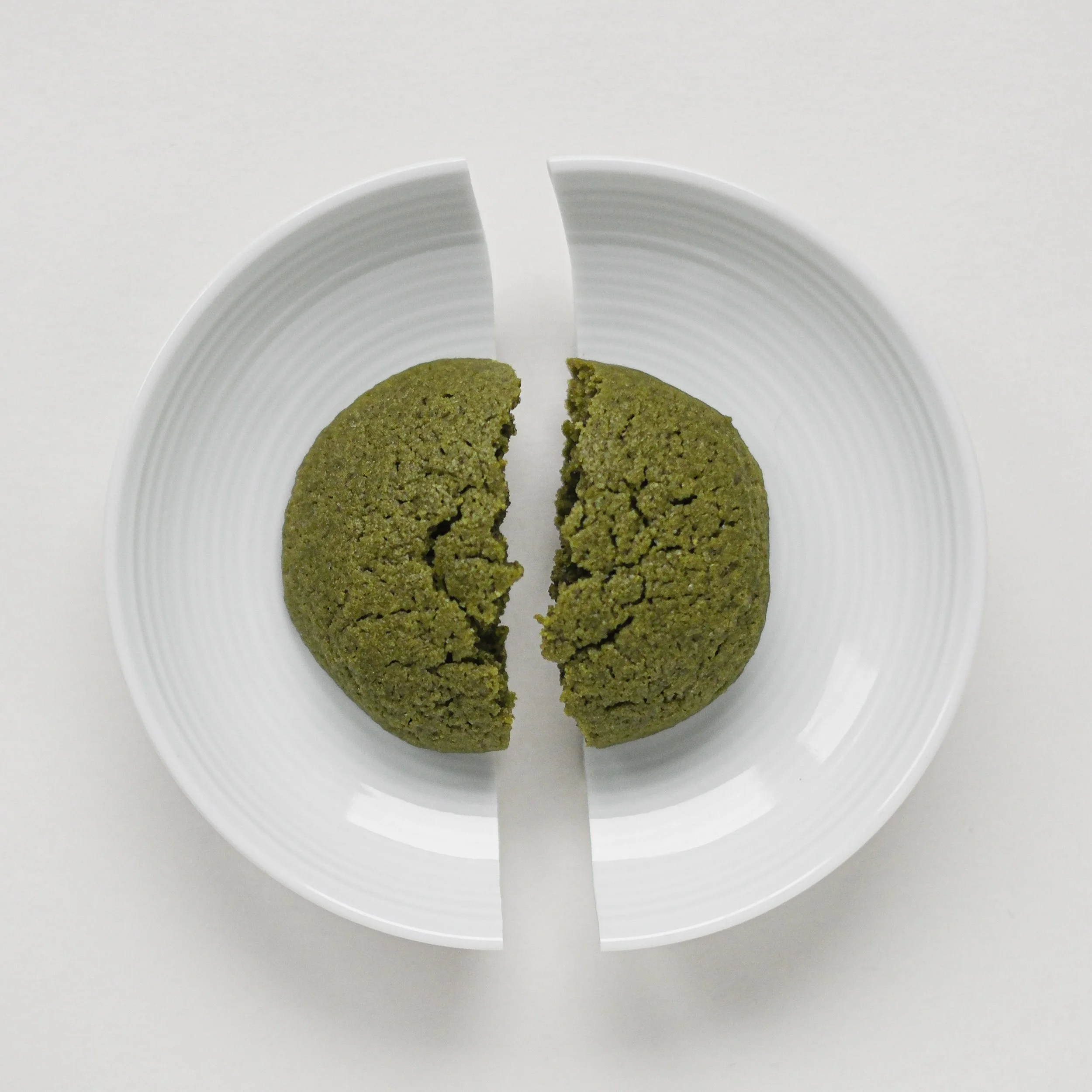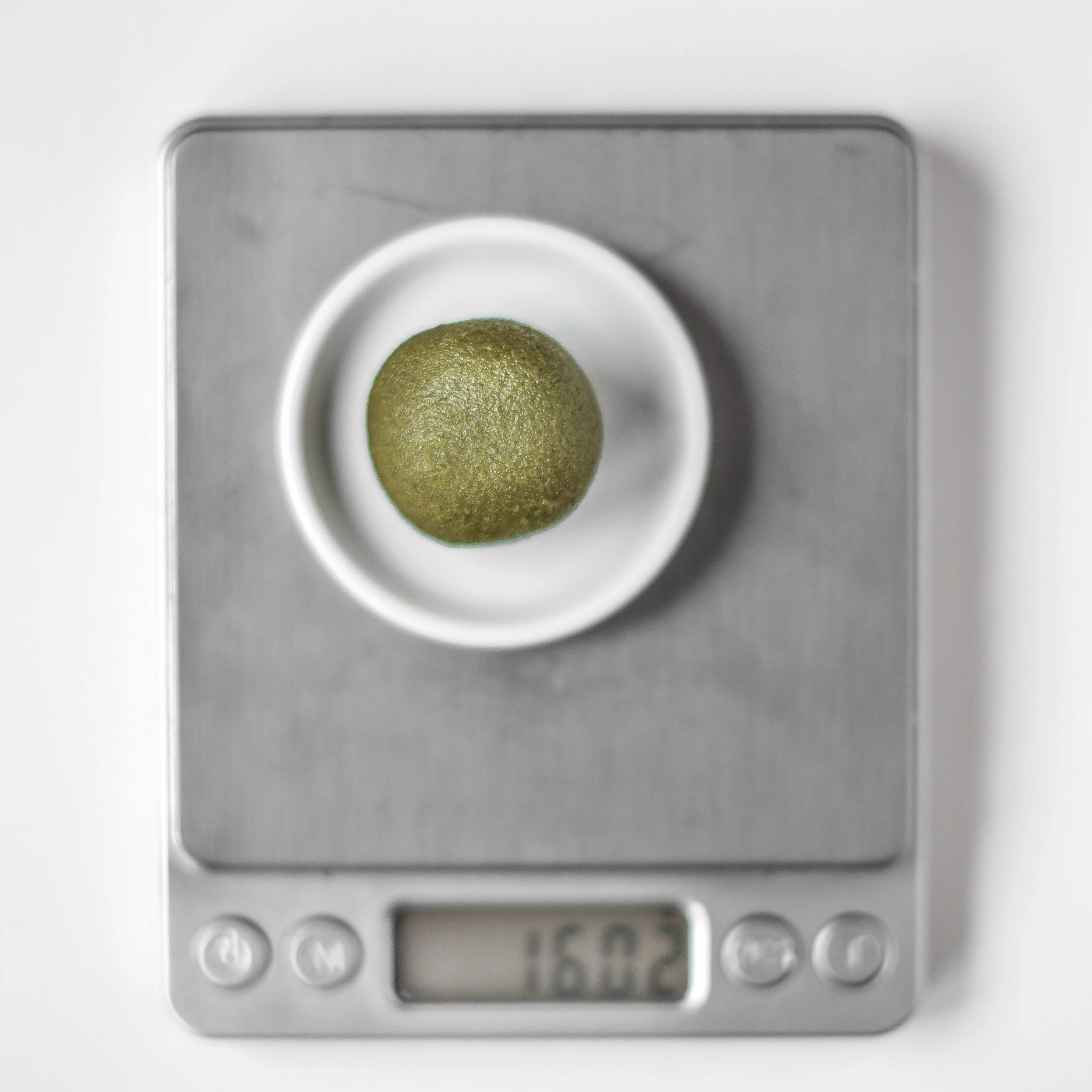To say that this is an exciting new development in my baking life is to understate things.
The how-to parts are in bold. The rest is context.
It’s easy. You whip the butter with the sugar and a lick of honey, then you beat in the egg. In a separate bowl you sift together the flour, matcha, salt, and soda. Next you add the dry ingredients to the wet and stir until combined. That’s it. All that’s left is the shaping and the baking (eleven minutes for me, with my oven thermometer showing 175°, no fan).
That was just to get you to relax, because this really is a very straightforward recipe. But now the instructions have come before the ingredients, which bucks a rule best observed. (Recipe writing is quite the exercise in pinpointing what’s “necessary and sufficient.” And in arranging things in perfect order, which I shall work on. And—within the framework of a blog post—in measuring out just the right amounts of process photography, personal essay, and general culinary lore.)
The matcha flavor here is clean, deep, and persistent. The honey almost vanishes into the background, but it builds chew by trapping moisture. The butter blesses the tea the way cream does in a matcha latte (which happens to be best sweetened with honey if it is to be sweetened at all). The salt adds depth and a mouth-watering quality that keeps the sweetness bright, not cloying. The soda is just barely there, but it gives a little bit of airy lift with a minimum of browning. Why a minimum? Color matters here—these look and taste best when bright green. (Mine are made with natural cane sugar, which is beige, not white. They would look even prettier if made with refined sugar, but that’s not an ingredient I use.)
I came up with this exact recipe after a string of experiments in matcha-based baking—attempts at shortbread, pound cake, and various types of drop cookie. (That’s the kind you neither roll-out-and-cut-out nor chill-and-slice, but rather “drop” onto the baking sheet. And if you’re like me, you might enjoy dropping the dough in disciplined little balls of equal size.) All the stuff I made showed promise, but only these domed beauties were a foolproof case of total perfection. So I wrote down exactly how much of what I used and I’ve repeated everything to the gram ever since.
100 g butter, softened
100 g sugar
10 g honey (a light variety)
1 egg (medium-sized)
160 g wheat or spelt pastry flour
15 g matcha powder
⅜ tsp salt (2 g)
⅛ tsp baking soda (¾ g)
If you prefer volume measurements, I’m including those, too, courtesy of the internet and my own experience. But I do so reluctantly! Such measurements are bound to be not-so-accurate. “One cup of flour” can range in weight from 115 g to 160 g—and that’s if you’re using an actual measuring cup in the first place. Likewise, if you use regular spoons and teaspoons, all bets are off. So if you don’t have access to a scale and proper measuring spoons, your cookies might spread too much or seem too dry. Adjust accordingly next time (mainly by increasing or reducing the amount of flour).
just under ½ cup butter, softened (or exactly half of one standard Polish block of butter)
½ cup sugar
1 ½ tsp (or ½ tbsp) honey (a light variety)
1 egg (medium-sized)
1 ¼ cup wheat or spelt pastry flour
2 tbsp + 1 ½ tsp (or 7 ½ tsp) matcha powder
⅜ tsp salt
⅛ tsp baking soda
Note about the quantity of matcha: I’ve also made these with two-thrirds of the specified amount, adding in an extra five grams of flour. With top-quality superstrong matcha this takes some of the intensity off and reduces the stimulant effect, to which I am very sensitive.
For ease of shaping, you might like to let the dough chill for a few minutes, so it doesn’t stick to your hands or spread as much while it bakes. You can also drop messy gobs of it straight onto the baking sheet using a couple of spoons, in which case your cookies will vary in size, shape, and texture. You can also chill the dough in a log and slice to bake, but then the baking time will be a bit longer (or shorter, if your slices are thin!) and the consistency of the cookie will differ enough to affect mouth feel and flavor. Just make sure not to let them brown—barely-done is perfect here.
As to the shaping, weighing out perfect little balls using a postal scale (handy for drugs, too!) is strictly optional. I happen to love it, partly because of the excitement I feel whenever I wind up with the exact amount I’m shooting for, which is often. I also like to know how to space my cookies on the baking sheet so that they either fill one or fill two—without having to move them around once they’ve warmed enough to lose shape and leave dabs of dough on the parchment as I reposition them. (The assembled dough weighs in at 438 grams. If I shoot for 28 balls—which I can fit on one baking sheet in seven staggered columns of four—I aim for a weight of 15 to 16 grams per portion of dough. And please ignore all this if it doesn’t sound fun at all.)
If you decide to make these, I hope they meet or exceed your expectations. If you run into any trouble or have anything you’d like to share, feel free to drop me a note and start a conversation.

